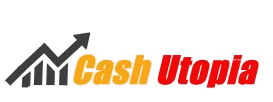Washington’s Tightrope Walk: Balancing Inflation Control and Economic Growth
The United States economy in mid-2025 finds itself at a critical juncture, with policymakers at the Federal Reserve and in the government navigating the delicate balance between taming persistent inflation and sustaining economic growth. This article examines the key challenges facing the US economy, the strategies being deployed to address them, and the potential pathways and pitfalls that lie ahead.
The Inflation Conundrum: Lingering Pressures and Policy Responses
Despite efforts to curb rising prices, inflation remains a significant concern for the US economy:
- Persistent Price Pressures: While some inflationary indicators have moderated, underlying price pressures in sectors like services remain stubbornly high.
- Federal Reserve’s Stance: The Federal Reserve continues its tight monetary policy, utilizing interest rate hikes and quantitative tightening to cool down the economy and bring inflation back to its target.
- Impact on Consumers and Businesses: High inflation erodes purchasing power for consumers and increases operating costs for businesses, potentially dampening economic activity.
- Labor Market Dynamics: A tight labor market, with low unemployment and strong wage growth in some sectors, adds complexity to the inflation picture.
Navigating the Growth Imperative: Avoiding a Recession
While combating inflation is paramount, policymakers are also acutely aware of the need to avoid triggering a significant economic downturn:
- Slowing Growth Indicators: There are signs that economic growth is moderating as a result of higher interest rates and cooling demand.
- Recession Risks: The possibility of a recession looms if the Federal Reserve’s tightening measures become too restrictive or if unforeseen economic shocks occur.
- Fiscal Policy Considerations: The government’s fiscal policies, including spending and taxation, play a role in influencing aggregate demand and economic growth.
- Consumer Spending Resilience: The strength of consumer spending, a key driver of the US economy, is being closely watched as inflation and higher borrowing costs impact household budgets.
Key Economic Challenges and Debates:
Several critical issues are shaping the economic landscape and policy discussions in the US:
- The Future Path of Inflation: The trajectory of inflation remains uncertain, with debates ongoing about whether it will prove persistent or eventually subside.
- The Labor Market Outlook: The sustainability of the strong labor market and the potential for rising unemployment are key concerns.
- Supply Chain Normalization: The extent to which supply chain disruptions, a factor contributing to earlier inflation, continue to ease will influence price pressures.
- Geopolitical Risks: Global geopolitical instability and conflicts can have economic repercussions for the US through trade, energy prices, and financial markets.
- The Debt Ceiling and Fiscal Sustainability: Debates surrounding the national debt ceiling and long-term fiscal sustainability add another layer of complexity to economic policymaking.
Policy Tools and Potential Outcomes:
The US government and the Federal Reserve have various tools at their disposal to manage the current economic challenges:
- Monetary Policy Adjustments: The Federal Reserve can continue to adjust interest rates and its balance sheet based on evolving economic data.
- Fiscal Policy Levers: Congress and the administration can utilize fiscal policy measures to provide targeted support or to influence overall demand.
- Regulatory Actions: Regulatory policies can impact various sectors of the economy and influence inflation and growth dynamics.
The path ahead for the US economy is fraught with uncertainty. Successfully navigating the tightrope between controlling inflation and sustaining growth will require careful monitoring of economic data, nimble policy adjustments, and a degree of good fortune in the face of global economic crosswinds. The decisions made by policymakers in Washington will have significant implications for the US and the global economy in the months and years to come.
